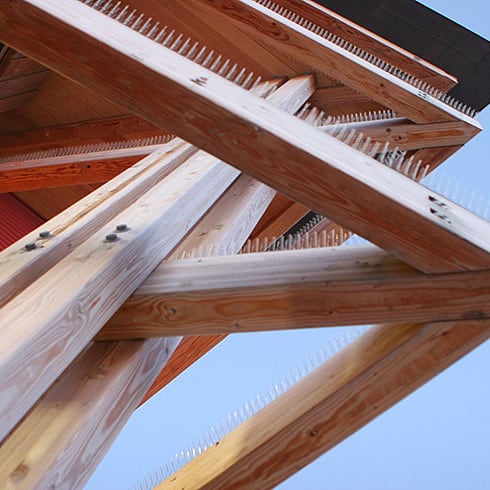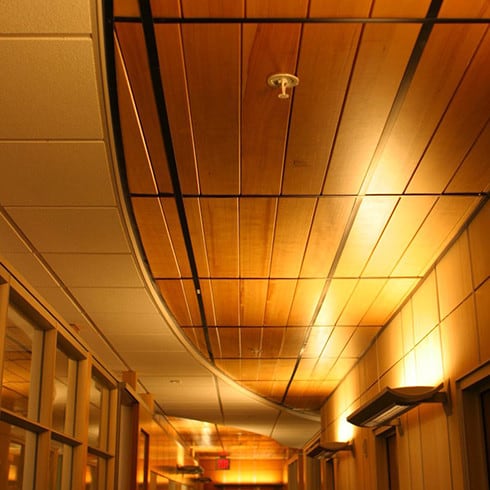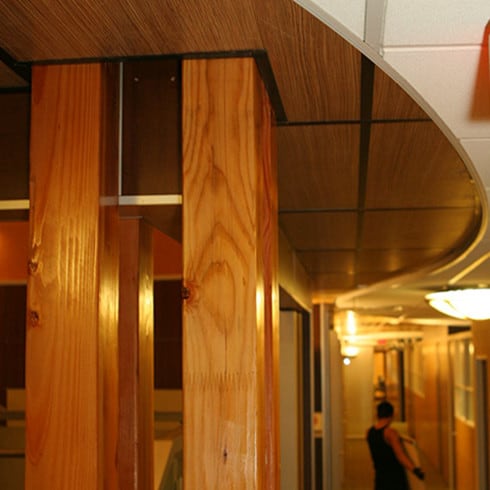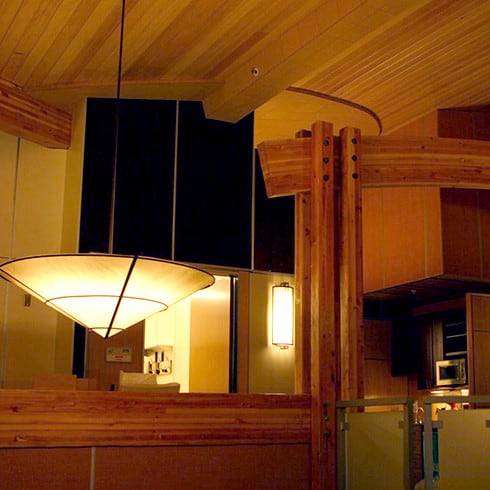In this issue we travel 400 miles west of Anchorage, Alaska to explore the stunning and inspired Association of Village Council Presidents Regional Housing Authority (AVCPRHA) headquarters. Located in the city of Bethel, this ambitious project needed to accomplish many things by being energy efficient, outfitted with the latest technology, and employing innovative building systems.
Exquisite Design in Extreme Bethel, Alaska

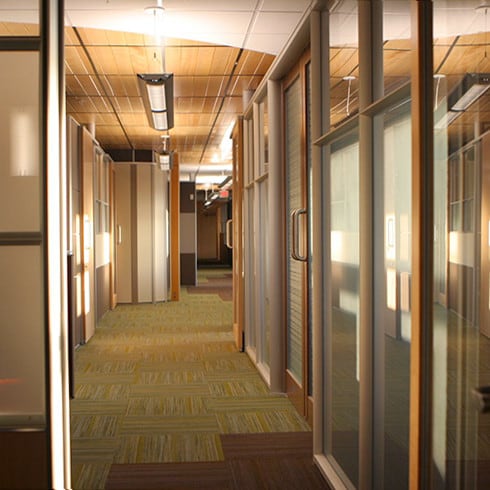
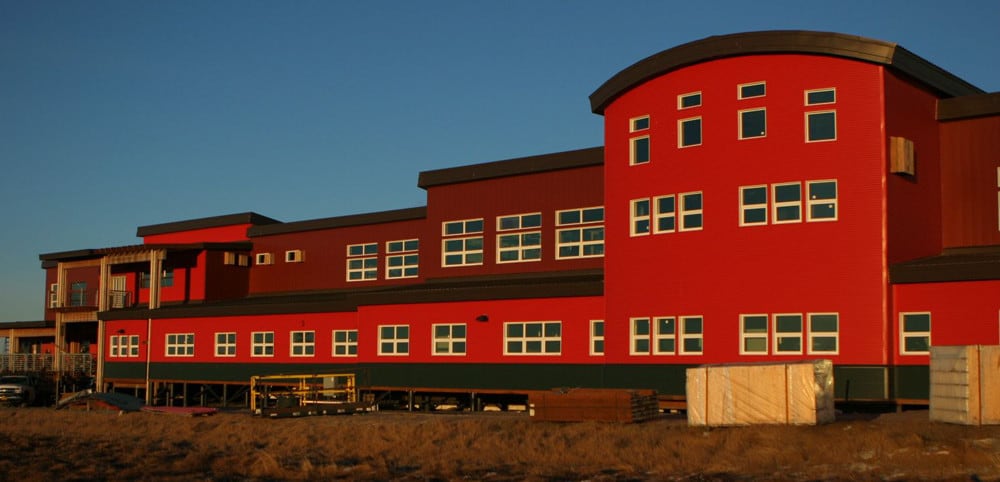
Building in Alaska is no easy feat. Extremely harsh, freezing weather, relatively short construction periods, and difficult access to building materials makes any project a challenge. Add to this the goal of building a community headquarters that is architecturally pleasing, among the dominant Alaskan box style of building, within a reasonable budget.
Bethel is the regional hub for its surrounding fifty-six federally-recognized tribes, all of whom are members of AVCP. Member tribes reside in small isolated villages scattered throughout the Yukon-Kuskokwim Delta in an area that is approximately 59,000 square miles, about the size of the State of Oregon. The villages are not connected by road to one another, nor to the rest of Alaska.
Type:
Commercial building
Location:
Bethel, Alaska
Total Square Footage:
31,600 square feet
Floor Covering:
Carpet and rubber tile
Energy:
Oil fired boilers
Architect
Wallace Swanson, Larsen Consulting Group
“We try to approach design from a personal bent and think, ‘What would I feel like working in the space? What colors, textures, and details would make the building a feast for the senses? What can we do to help shape the environment of the building?’ Our underlying objective upon completion of the project is that we want people to say how much they love the space!
Building in Bethel presents many challenges, one of which is the extreme location. Careful consideration was given to every facet of the design to ensure the headquarters came together and functioned as desired. All building materials were shipped by ocean and river barges because the city is inaccessible by road.
The weather here is fierce, to say the least, and we wanted to build an energy efficient and stunning headquarters for the AVCPRHA. Steel pilings sunk 40 to 60 ft. into the tundra gives structural support, instead of a conventional foundation, which cannot be used due to the year-round permafrost. Another important design feature takes advantage of the copious amounts
of sunlight Bethel receives in the summer by covering the 300-ft. long south face of the building with large windows. Conversely, on the north side the building entrances were designed to be lit in a striking, yet subtle way.
SIPs were used for the exterior walls of the building to minimize heat loss because the building envelope is our first priority
when designing an energy-efficient building.
As a bonus, SIPs are easy to ship and erect quickly, which helped to keep construction on schedule within a short and unpredictable timeline. If we don’t take care of the walls and roof, then everything else we do up here just isn’t very effective.
Temperatures in Bethel average 7°F in winter so heating a building of this size, efficiently, is also a significant challenge. Warmboard was integral in achieving this goal and interfaced smoothly with the multiple systems used in the building composition. Warmboard radiant heating covers 70% of the 30,000 sq ft building floor and is powered by oil-fired boilers. The Warmboard assembly was then covered with 1/4″ wood underlayment and followed by finished floor coverings of carpet and rubber tile.
I have worked with Warmboard on 8 or more projects and will use it again. I especially like that Warmboard solves 2 problems at once – the radiant panels are also structural subfloor. The structual aspect is a huge benefit to our design team. If it wasn’t for Warmboard we wouldn’t have put radiant into the project.
I also recognize the extreme efficiencies of Warmboard which is also a big benefit to our team. The heating system can be run with relatively low temperature water while still outputting ample BTU’s. We designed the Warmboard system to have 44 zones so the occupants can precisely control which areas of the building get heat, and how much is delivered. This helps further increase the overall comfort of the building while decreasing the operating cost.
Another innovative system we used was the ‘Doing It Right This Time’ modular wall solution. It consists of prefab, interior and partition walls with electrical and data connections built in. It puts together really easy and fast and walls can be taken down and reconfigured which is a big issue with the housing authority. It also required less materials and installation time compared to conventional drywall. Drywall was used in the building only when needed for fire-rated assemblies.
The building features beautifully appointed, and atypically Alaskan, architectural details such as a barrel vault, bump- outs, glulam arches, and multiple roof planes. Pretty much without fail aesthetics go out the window when it comes to rural Alaska because it’s so costly to get materials and a construction force out there. There’s a premium to making it happen, which isn’t a lot, but people don’t want to put in the effort to make it work cost effectively. One of our goals here was to demonstrate that we could do architecture and performance and do it within budget.” – Wallace Swanson
Larsen Consulting Group
907-245-8899
wallace [at] lcgak.com
AVCPRHA
Joe Killeen, Vice President of Development and Chief of Design and Construction
An important component of this project was the need to bring all AVCPRHA staff under one roof, instead of being dispersed within 3 overcrowded buildings throughout Bethel. Ron Hoffman, CEO, had this dream for a long time and is thrilled that all the departments have been successfully consolidated in a cutting edge building and using the latest technology. This logistical update significantly helps the organization better serve the people and communities of the Yukon-Kuskokwim Delta.
I love the building. It took a lot of planning and a good group of design professionals: Architects, Engineers, and a Materials Supplier, Specialty Supply, Inc., making good recommendations for available materials that are reasonably priced. We built the entire building using local workers participating in AVCPRHA’s job training initiative and had great supervision from the Project Managers, Ashley Day and Lucas Parker, at Kuchar Construction. Working with architects Wallace Swanson and Ryan Wrocklage of Larsen Consulting Group throughout the design process helped us reach a building tailor-made for the current and future needs of the housing authority. This building is designed to sustain the needs of the area for 100 years to come.
It was of the utmost importance that the building was ultra efficient to lower our heating fuel consumption and keep the heating bills down. We wanted to outfit the building with the latest technology to ensure easy and seamless communications and also needed the ability to change spatial configurations with the modular wall system. Warmboard worked very well with this function since the wall configuration and heating systems were mutually exclusive, yet cohesive. Additionally, we couldn’t have any baseboards due to the modular wall system so Warmboard completely solved this problem.
I’d been waiting for the right opportunity to use radiant for years. We build mostly residential homes and use Toyo Stoves, not boilers, so the opportunity hadn’t presented itself before. Architect Wally Swanson brought Warmboard to my attention and I immediately saw the potential and value in using it.
The most important feature with Warmboard for me was how easily it installed and how the conductive layer of aluminum is contained within the floor sheathing itself. All other radiant systems are usually embedded with poured concrete or hung under the floor from the floor joists. The Warmboard system just makes sense to me. The second Wally showed me the sample I knew it was the product I wanted.
The overall cost of heating the building using Warmboard has been reduced and just as importantly, the heat is incredibly uniform and comfortable, even with a -40°F sustained outdoor temperature. At our old building my Administrative Assistant used to wear her coat and have an electric heater under her desk all day long, but she no longer does that.
The biggest challenge is always the weather in western Alaska because it can change on a dime. The way you overcome the weather is through detailed planning and thorough understanding of the installation so it can be completed quickly. Safe to say, we did our best but still got rained on. We just had to deal with it.
The building is very architecturally pleasing and it has a lot of nice features. It has a barrel vault with a mezzanine that overlooks a very nice lobby, the entry area has a vaulted ceiling with a nice stairway, and there is lots of open free space for employees. The three entries are located on the north side, where it is dark and shadowy for a significant part of the year. Using depth and well placed lighting the entryways appear as lanterns, welcoming people in. There are some highlighted spaces where we put naturally finished ipe, a species of cedar, over rough-sawn cedar to break it up and create a focal point over the three entries.
Looking back at the project, Warmboard helped us achieve the desired functionality of the building because we didn’t have to deal with baseboards, the installation was easy, and the occupants have basked in the quiet, invisible, comfortable warmth of radiant heating. The customer service we received from Warmboard throughout the process was also exemplary and further added to our positive experience using the product.” – Joe Killeen
AVCP Regional Housing Authority
907-543-3121
Warmboard’s superior conductivity provides a host of fourth dimension benefits. Consistent temperatures and humidity conditions, clean air, a perfectly silent heating system; these all contribute to a long and healthy life in a home that can be enjoyed as time goes by, for many years to come.
